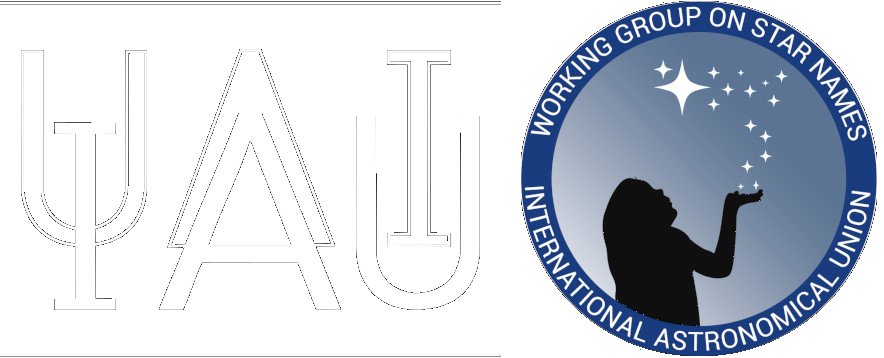Langwei (郎位)
Chinese constellation in Coma Berenices.
Etymology and History
Langwei郎位 (Láng Wèi, Officers of the Imperial Guard) refers to a constellation in the sky composed of 15 stars, located to the northeast of the 五帝座 (Wǔ Dì Zuò, Thrones of the Five Emperors) within the Supreme Palace Enclosure (太微垣, Tài Wēi Yuán). This asterism belongs to the Shi School and is depicted in red on ancient Chinese celestial globes and maps. The main duty of Lang officials was to guard and protect. Ancient Chinese believed that the state of the Langwei constellation was closely related to earthly governance and palace affairs. If these stars were not complete, the empress would die, and favored ministers would be executed. If these stars were bright and large or guest stars (meteors or comets) entered this constellation, it signified that ministers would cause rebellion.
Identification of stars
This constellation roughly corresponds to the Coma Star Cluster. It is very prominent in the sky, which is why it was noticed by ancient Chinese astronomers early on. Both Sima Qian's "Records of the Grand Historian" (Tianguan Shu) and the Shi School's Xing Jing (Star Canon) mentioned Langwei, describing it as consisting of 15 stars. However, due to the dense star population in that area, identifying which specific 15 stars this constellation consists of can be challenging. However, in the star catalog of the Shi School of the Western Han dynasty, gam Com was identified as the key star of this constellation. During the Song and Yuan dynasties, this star was also referred to as "Big Star on the Head" or "Northern Star," thus, it can be considered that gam Com has consistently been recognized as the northernmost star of this constellation. In the Song dynasty, 7 Com was called the "Southwest Star." Therefore, under the premise that this constellation did not change throughout ancient times, Boshun Yang conducted a comprehensive comparison of historical star catalog data to reconstruct this constellation consistent with measurements from various eras.
| Star Names or Orders(Qing) | Rufus and Tien Suzhou map[1] | Ho PENG YOKE[2] | Yi Shitong[3] | Pan Nai[4] based on Xinyixiangfayao Star Map | SUN X. & J. Kistemaker[5] Han Dynasty | Boshun Yang[6] |
|---|---|---|---|---|---|---|
| Northern Star (determinative star, 1st) | Com | gam Com | gam Com | HIP 60018 | gam Com | gam Com |
| 2nd | Com | 14 Com | Com | gam Com | 14 Com | 14 Com |
| 3rd | Com | 16 Com | 14 Com | HIP 59923 | 16 Com | 16 Com |
| 4th | Com | HIP 60197 | 16 Com | 14 Com | 13 Com | HIP 60170 |
| 5th | Com | HIP 60170 | 17 Com | 9 Com | 17 Com | 17 Com |
| 6th | Com | 13 Com | 13 Com | HIP 59489 | 12 Com | 13 Com |
| 7th | Com | 12 Com | 12 Com | 16 Com | 21 Com | 12 Com |
| 8th | Com | HIP 60168 | 21 Com | HIP 60170 | 18 Com | HIP 60168 |
| 9th | Com | 17 Com | 18 Com | HIP 59364 | 7 Com | HIP 60066 |
| 10th | Com | HIP 60525 | 7 Com | HIP 60880 | 23 Com | 21 Com |
| 11rst | Com | 22 Com | 23 Com | 17 Com | HIP 61420 | HIP 60327 |
| 12nd | Com | 21 Com | 26 Com | 13 Com | 26 Com | 22 Com |
| 13rd | Com | 18 Com | 20 Com | 12 Com | 18 Com | |
| 14th | Com | HIP 60599 | 5 Com | HIP 60168 | HIP 60599 | |
| Southwest Star (15th) | Com | 7 Com | 2 Com | 4 Com | 2 Com | 7 Com |
Images
- Langwei
References
- ↑ Rufus. W. C., Hsing-chin Tien. The Soochow Astronomical Chart. Ann Arbor: University of Michegan Press. 1945, Pp23-24.
- ↑ P.-Y. Ho, “Ancient And Mediaeval Observations of Comets and Novae in Chinese Sources,” Vistas in Astronomy, 5(1962), 127-225.
- ↑ Yi Shitong伊世同. Zhongxi Duizhao Hengxing Tubiao中西对照恒星图表1950. Beijing: Science Press.1981: 25-26.
- ↑ Pan Nai潘鼐. Zhongguo Hengxing Guance shi中国恒星观测史[M]. Shanghai: Xuelin Pree. 1989. p222.
- ↑ Sun Xiaochun. & Kistemaker J. The Chinese sky during the Han. Leiden: Brill. 1997, Pp241-6.
- ↑ B.-S. Yang杨伯顺, Zhongguo Chuantong Hengxing Guance Jingdu ji Xingguan Yanbian Yanjiu 中国传统恒星观测精度及星官演变研究 (A Research on the Accuracy of Chinese Traditional Star Observation and the Evolution of Constellations), PhD thesis, (Hefei: University of Science and Technology of China, 2023). Pp. 244-45.











